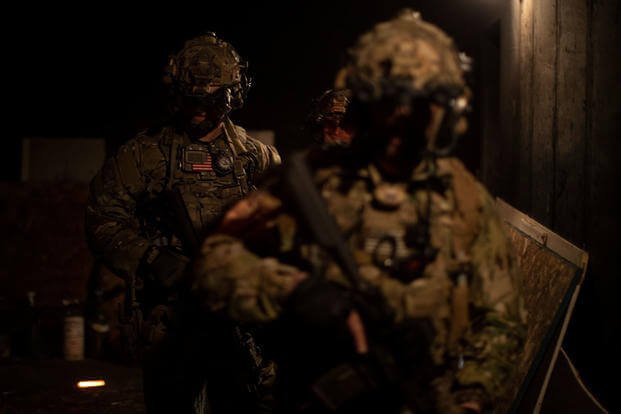The opinions expressed in this op-ed are those of the author and do not necessarily reflect the views of Military.com. If you would like to submit your own commentary, please send your article to opinions@military.com for consideration.
The United States is at an inflection point in our national defense planning. China's growing military strength presents us with a peer adversary for the first time since the Cold War that can threaten our air superiority, compete with us technologically, and deny or even control our traditional blue water spaces. It is contesting American influence across almost all domains, especially the military one.
In this competition, the vital task of our military leaders is guessing what the next war might look like. Unfortunately, too many of them are guessing wrong. In Iraq and Afghanistan, in Georgia and the Persian Gulf, our adversaries have gained immense advantage with gray zone warfare, irregular and unconventional operations below the threshold of conventional war, complicating legal questions and policy responses.
American special operations forces (SOF) and their enablers remain custom-built for this kind of warfare. Through building partner militaries, conducting psychological warfare, and collecting high-risk intelligence, these forces conduct missions that we need to blunt our adversaries' most successful means of attack.
Army Secretary Christine Wormuth has made public comments in favor of cuts to Army special operations and other forces she sees as "parts of our formations that were purpose-designed for those kinds of fights [traditional SOF missions] where we may not need quite as much capacity going forward." In the 2024 annual defense policy bill, the National Defense Authorization Act (NDAA), U.S. Special Operations Command lost around 700 billets. Now, for the 2025 NDAA, the Army alone is pressing for a cut of more than 3,000 SOF and enablers. Unfortunately, it looks like Defense Secretary Lloyd Austin has approved these cuts. That is a mistake, and one that Congress should rectify.
During the Georgia war in 2008, Russia used South Ossetian proxies to gradually increase the pressure on Georgia's conventional forces until Tbilisi acted and earned the opprobrium for seeming to start the war. In Iraq, Iranian proxy militias have infiltrated and pressured U.S. and Iraqi actors alike to achieve near-total control over the Iraqi state apparatus, without a conventional Iranian military action. And in Afghanistan, Pakistan used the power of proxies like the Haqqani Network to push the United States into a humiliating withdrawal, mostly without suffering consequences as a result. These strategies work, and our adversaries and competitors -- especially near-peer ones -- will not abandon them because we want them to.
One of the key operational breakthroughs in the Global War on Terror came from the development of the Find, Fix, Finish and Exploit doctrine, which directed the rapid collection and exploitation of intelligence to enable operators to conduct multiple raids in a single night.
These operations were vital to taking down terrorist networks before they could react. With the proposed cuts to U.S. Army SOF, and to enablers most of all, those key procedures and achievements are at risk of being lost.
The SOF community and its enablers are unique in the military. They are more senior, more trained and generally stay in service for a longer period of time to put their skills to work. Those capabilities cannot be rebuilt overnight, and cutting them risks a tremendous strategic loss.
The enemy is not static: They watch how we fight and see what works. Beijing wants Taiwan just as much as Russian President Vladimir Putin wants Ukraine, but it has no desire to pay the price. It is now trying to assess Russia's conventional arms debacle in Ukraine, which is very different from the hybrid wars Moscow has waged in the past 20 years. Russia's invasion of Ukraine filled television screens with images of long columns of tanks and armored vehicles heading toward Kiev, but that invasion was blunted. Whatever gains Russia is left with, if any, are not worth nearly the cost it has paid.
Given the choice, China wants to achieve domination of Asia without military conflict -- certainly not at the price Russia has paid in Ukraine, and most likely through the kind of gray zone warfare that has worked for Moscow and others in the past.
The odds that China's warfare in the future will feature the kind of mass conventional arms attacks of World War II and not the hybrid operations of the Georgia war or insurgency of Afghanistan are slim.
America must rebuild its conventional deterrent, including its blue water Navy and submarine force, and especially its manufacturing industrial base. But sacrificing the best capabilities the U.S. developed in the last war, the forces that achieved the only real victories, is foolhardy and invites disaster.
-- Mike Waltz represents Florida's 6th District in the U.S. House of Representatives. He is a member of the Armed Services Committee, a retired Green Beret and National Guard colonel, a former White House counterterrorism policy adviser, and a defense policy director for secretaries of Defense Donald Rumsfeld and Robert Gates.











